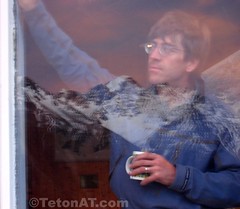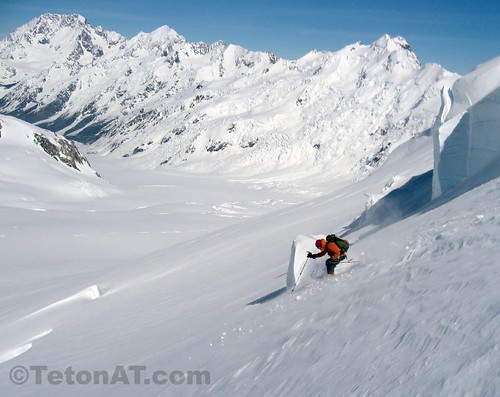 Over the past few years I’ve been fortunate enough to do a little bit of skiing with Park City resident, Mountain Hardwear athlete and United States Ski Mountaineering Association board member, Andrew McLean. Andrew has inspired me over the years with his amazing descents throughout the world and with his outlook on the sport of ski mountaineering and alpine touring.
Over the past few years I’ve been fortunate enough to do a little bit of skiing with Park City resident, Mountain Hardwear athlete and United States Ski Mountaineering Association board member, Andrew McLean. Andrew has inspired me over the years with his amazing descents throughout the world and with his outlook on the sport of ski mountaineering and alpine touring.
I truly admire the fact that he admits to being scared to death while skiing the Hossack- McGowan route on the Grand Teton, and Andrew’s upfront, candid attitude gains him large quantities of respect from his peers. I remember him saying…’nice turns’…to me once, and I couldn’t believe how good it made me feel. Lucky for him, Andrew is probably approaching one of the biggest challenges of his life…fatherhood.
 Andrew McLean skis the Upper Tasman Glacier with Mount Cook in the background
Andrew McLean skis the Upper Tasman Glacier with Mount Cook in the background
I agree with everything that Stephen said…here are a few similar thoughts…
Aside from coming home alive and having fun, honesty is one of the most important aspects of mountaineering and ski mountaineering. The key thing to any of these questions is honesty. If you take them at face value without any semantics or wordplay, they aren’t that hard. Skiing means skiing, not downclimbing or rappelling.
To claim a successful descent, should it start from the summit of a mountain?
The summit matters if you are claiming a descent of a peak, like Rainier or Denali. There is a huge difference between skiing ON a peak and skiing FROM the peak! If the actual tip of the peak is unskiable, there’s no shame in saying you skied from 20′ below the summit due to an ice cap, rock or whatever, which also leaves it open for someone to come along and ski it from the summit when/if conditions ever allow. If you ski from the summit, there’s no question. If you skied from close to the summit, time and the skiing community will decide.
In cases like individual couloirs, they may not go to the summit, but are valid descents on their own.
Are you allowed to rappel?
For sure, as long as you are honest about it.
What’s better…rappelling or downclimbing?Once you take your skis off or start hanging on a rope, it doesn’t matter. You are no longer skiing.
Andrew McLean in his element
What if someone skis a line in better style…or conditions?
That’s part of the game. Bill Briggs will always be credited with the first descent of The Grand Teton, even though he rappelled. When/if it is ever done without down-climbing or rope-work, it will be a legitimate progression in style, and perhaps the first “true” ski descent of The Grand. Still, in cases like this, the later descent would not be possible without the pioneering efforts of Bill Briggs and wouldn’t invalidate his descent. In ski mountaineering, there is a big difference between a “first descent” and a “first ski descent” – a small point that is often lost on the general public.
What about huge expeditions, where a Sherpa my be carrying your gear…while your sucking the O’s?
It’s not my style, but I’m OK with it. As long as people are honest about it, it is a personal choice.
What if someone skis 100′, raps 2000′, then skis 100′ back to camp…valid descent?
No, definitely not. The North Face of the Grand Teton could be skied this way and it would be an embarrassment to whoever claimed it. There’s no magic ratio or number aside from common sense. But, in that regard, I guess I’d be willing to give someone credit for the first descent of the North Face of the Grand if they skied off the top, fell 2,500′ and skied out of it and lived.
Andrew McLean
Really…comments from Mark Newcomb in Part 3. I promise!
